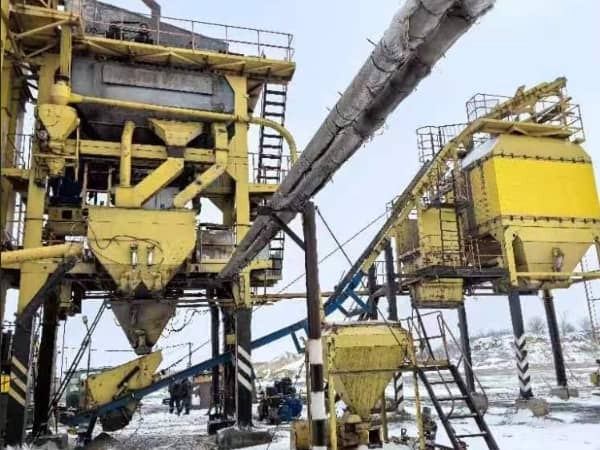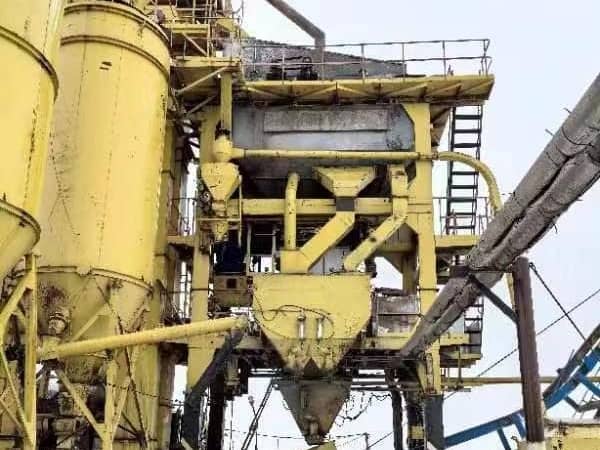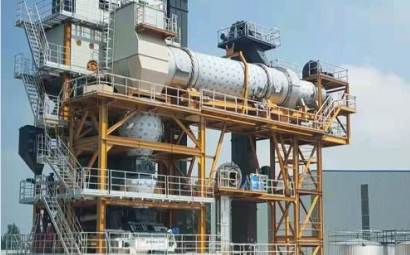Power asphalt plants are designed for stone mastic asphalt production and we have a module in our software system.Also we produce cellulose dosing unit.With our experienced staff, we provide not only plant sales, but also after-sales operation support and personnel training.
SMA is a relatively thin (12.5–40 mm) gap-graded, densely compacted, HMA that is used as a surface course on both new construction and surface renewal. It is a mixture of asphalt cement, coarse aggregate, crushed sand, and additives. These mixes are different from normal dense grade HMA mixes in that there is a much greater amount of coarse aggregate in the SMA mix. It can be used on major highways with heavy traffic volumes. This product provides a rut resistant wearing course and resistance to the abrasive action of studded tires. This application also provides slow aging and good low-temperature performance.


SMA is used to maximize the interaction and contact among the coarse aggregate fraction in HMA. Asphalt cement and finer aggregate portions provide the mastic that holds the stone in close contact. Typical mix design will generally have 6.0–7.0% medium-grade asphalt cement (or polymer-modified AC), 8–13% filler, 70% minimum aggregate greater than 2 mm (No 10) sieve, and 0.3–1.5% fibers by weight of mix. Fibers are generally used to stabilize the mastic and this reduces the drain off of binder in the mix. Voids are normally kept between 3% and 4%. Maximum particle sizes range from 5 to 20 mm (0.2 to 0.8 in.).
Mixing, transportation, and placement of SMA use the customary equipment and practices with some variations. For example, higher mixing temperature of about 175°C (347°F) is usually necessary because of coarser aggregate, additives, and relatively high viscosity asphalt in SMA mixes. Also, when cellulose fibers are used, the mixing time has to be increased to allow for proper mixing. Rolling begins immediately after placement to achieve density quickly before the mix temperature decreases significantly. Compaction is usually accomplished by use of 9–11 tonne (10–12 ton) steel-wheeled rollers. Vibratory rolling may also be used with caution. Compared to normal dense-graded HMA, SMA has better shear resistance, abrasion resistance, cracking resistance, and skid resistance, and is equal for noise generation. Table 10.7 represents the comparison of the gradation of SMA used in the United States and Europe.
 Albanian
Albanian  Russian
Russian  Arabic
Arabic  Amharic
Amharic  Azerbaijani
Azerbaijani  Irish
Irish  Estonian
Estonian  Odia (Oriya)
Odia (Oriya)  Basque
Basque  Belarusian
Belarusian  Bulgarian
Bulgarian  Icelandic
Icelandic  Polish
Polish  Bosnian
Bosnian  Persian
Persian  Afrikaans
Afrikaans  Tatar
Tatar  Danish
Danish  German
German  French
French  Filipino
Filipino  Finnish
Finnish  Frisian
Frisian  Khmer
Khmer  Georgian
Georgian  Gujarati
Gujarati  Kazakh
Kazakh  Haitian Creole
Haitian Creole  Korean
Korean  Hausa
Hausa  Dutch
Dutch  Kyrgyz
Kyrgyz  Galician
Galician  Catalan
Catalan  Czech
Czech  Kannada
Kannada  Corsican
Corsican  Croatian
Croatian  Kurdish (Kurmanji)
Kurdish (Kurmanji)  Latin
Latin  Latvian
Latvian  Lao
Lao  Lithuanian
Lithuanian  Luxembourgish
Luxembourgish  Kinyarwanda
Kinyarwanda  Romanian
Romanian  Malagasy
Malagasy  Maltese
Maltese  Marathi
Marathi  Malayalam
Malayalam  Malay
Malay  Macedonian
Macedonian  Maori
Maori  Mongolian
Mongolian  Bengali
Bengali  Myanmar (Burmese)
Myanmar (Burmese)  Hmong
Hmong  Xhosa
Xhosa  Zulu
Zulu  Nepali
Nepali  Norwegian
Norwegian  Punjabi
Punjabi  Portuguese
Portuguese  Pashto
Pashto  Chichewa
Chichewa  Japanese
Japanese  Swedish
Swedish  Samoan
Samoan  Serbian
Serbian  Sesotho
Sesotho  Sinhala
Sinhala  Esperanto
Esperanto  Slovak
Slovak  Slovenian
Slovenian  Swahili
Swahili  Scots Gaelic
Scots Gaelic  Cebuano
Cebuano  Somali
Somali  Tajik
Tajik  Telugu
Telugu  Tamil
Tamil  Thai
Thai  Turkish
Turkish  Turkmen
Turkmen  Welsh
Welsh  Uyghur
Uyghur  Urdu
Urdu  Ukrainian
Ukrainian  Uzbek
Uzbek  Spanish
Spanish  Hebrew
Hebrew  Greek
Greek  Hawaiian
Hawaiian  Sindhi
Sindhi  Hungarian
Hungarian  Shona
Shona  Armenian
Armenian  Igbo
Igbo  Italian
Italian  Yiddish
Yiddish  Hindi
Hindi  Sundanese
Sundanese  Indonesian
Indonesian  Javanese
Javanese  Yoruba
Yoruba  Vietnamese
Vietnamese  Hebrew
Hebrew  Chinese (Simplified)
Chinese (Simplified)







